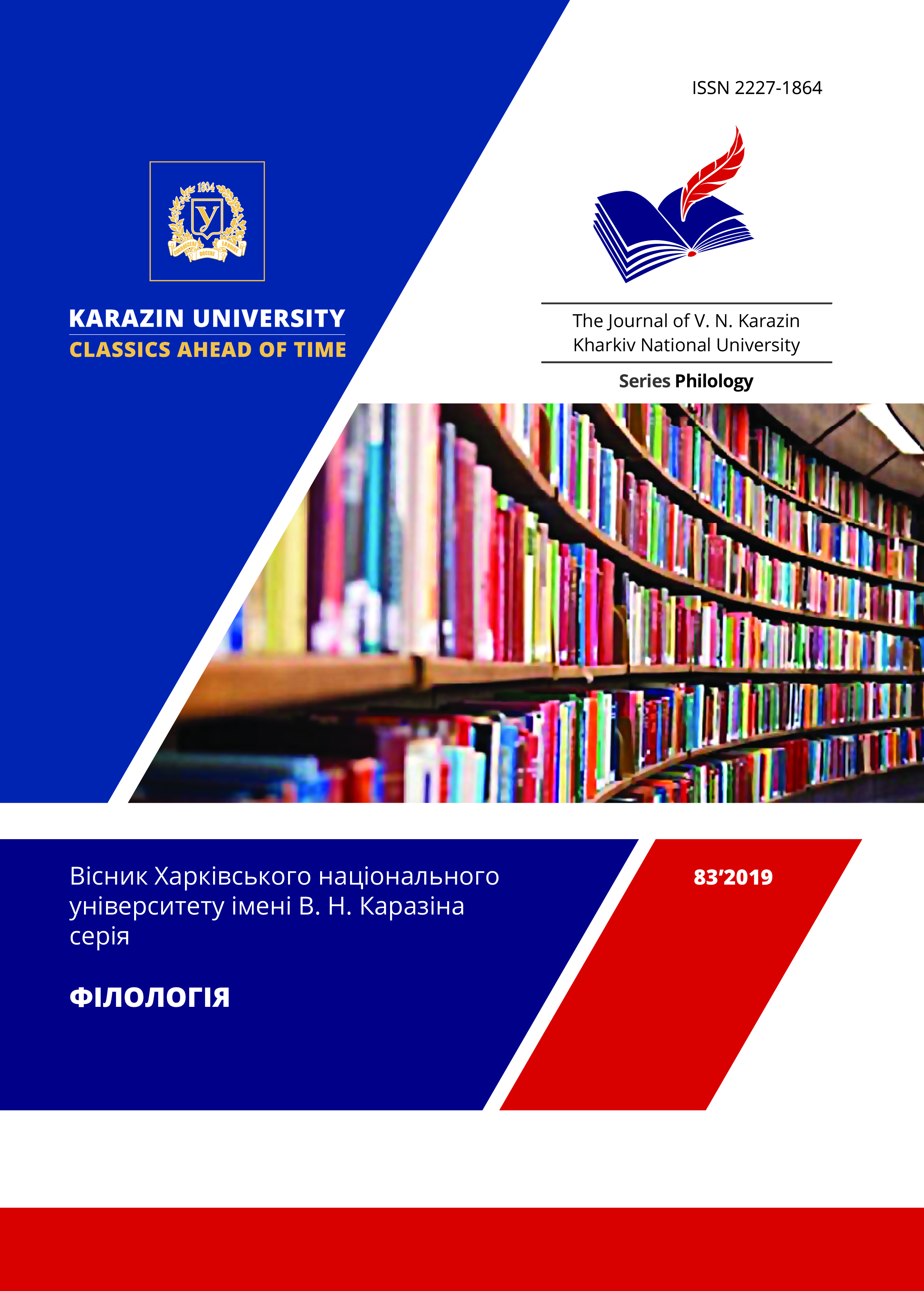Alternative US History in Philip Dick’s Novel The Man in the High Castle (1962) and Philip Roth’s Novel The Plot Against America (2004)
Abstract
The paper gives a comparative analysis of Philip K. Dick’s novel The Man in the High Castle (1962) and Philip Roth’s novel The Plot Against America (2004) focusing on the role of the US national cultural mythology, primarily the American Dream, in the time of trials. Both works belong to the genre of alternative history with elements of dystopia and autobiography. The genre, plot and narrative peculiarities of these novels and the TV series The Man in the High Castle (2015–2019) are compared, namely: the alternative historical background of events, the subjective and objective factors of possibility of the World War II alternative retrospective suggested by the authors, the plot and narration in the novels. The alternative background (the success of a totalitarian Nazi project in the USA) is detailed in both novels, but Dick’s reality (the US occupation by the Axis countries and loss of national dignity) is more tragic than Roth’s reality, which shows a temporary deviation from the right course of his country that does not lead to the loss of independence. The structure of these works differs: multicultural polyphony with three worlds, six storylines and seven focalizers in Dick’s novel and linearity with a single focalizer and a focus on “The Jewish question” in Roth’s book, but both authors succeed in showing a convincing picture of a possible decline of humanistic and democratic projects. On the basis of such analysis, the problems of novels, in particular, the pitfalls of the American Dream are considered: mass consciousness, lack of critical thinking, consumerism, populism, pursuit of success, anti-Semitism, racism, xenophobia, over-enthusiasm for the “melting pot” concept, etc. The main method of restoring the American Dream for both authors is the proof by contradiction: by displaying global history through the local, they are gradually debunking totalitarian projects, which at first may seem very attractive, because they are based on the best myths and expectations of the mass society.
Downloads
References
Dik, F. K. (2017). Lyudyna u vysokomu zamku [The Man in the High Castle] / per. z angl. I. Serebryakova. Kyiv : Komubuk. [in Ukrainian].
Krinitskaya, N. I. (2010). Problema realnosti v romane Filipa K. Dika «Chelovek v vysokom zamke» [The Problem of Reality in Philip K. Dick’s The Man in the High Castle]. Materialy XXXIV Mezhdunarodnoy konferentsii OIKS «Otobrazheniye istorii v kulture SSHA» (Moskva, 12–17 dekabrya 2008 g.), M.: MGU, pp. 225–234.
Krynytska, N. I. (2014). Ekranizatsiyi naukovo-fantastychnykh tvoriv Filipa Kindreda Dika v konteksti masovoyi kultury [Screen Adaptations of Philip Kindred Dick’s Sf Works Within the Context of Mass Culture]. Derzhava ta rehiony: naukovo-vyrobnychyy zhurnal. Zaporizhzhya : Klasychnyy pryvatnyy universytet, No 4 (39), pp. 42–47.
Krynytska, N. I. Ontolohichni modeli v romani Filipa K. Dika «Lyudyna u vysokomu zamku» (The Ontological Models in Philip K. Dick’s Novel Man in the High Castle). Aspekty doslidzhennya inozemnykh mov i linhvometodychni osnovy vykladannya: zbirnyk statey. Vyp. 17. Poltava, 2016. S. 28–32.
Latov, Yu. V. (2005). Retroprognozirovanie (kontrfakticheskaya istoriya) kak raznovidnost issledovaniy PATH DEPENDENCE i QWERTY-effektov [Retro-prediction (counterfactual history) as a kind of researching PATH DEPENDENCE and QWERTY effects]. «20 let issledovaniya QWERTY-effektov i zavisimosti ot predshestvuyuschego razvitiya»: internet-konferenciya (15.04.05–5.06.05). Available at: http://ecsocman.hse.ru/text/16213312/.
Brown, W. L. (2006). Alternate Histories: Power, Politics, and Paranoia in Philip Roth’s The Plot Against America and Philip K. Dick’s The Man in the High Castle. The Image of Power in Literature, Media, and Society: Selected Papers, 2006 Conference, Society for the Interdisciplinary Study of Social Imagery. Pueblo, CO, Colorado State University-Pueblo, pp. 107–111.
Carter, C. (1995). The Metacolonization of Dick’s The Man in the High Castle: Mimicry, Parasitism and Americanism in the PSA. Science-Fiction Studies, vol. 67, no. 22, part 3 (November), pp. 333–342.
Chard-Hutchinson, M. (2009). ‘Perpetual Fear’: Repetition and Fantasy in The Plot Against America by Philip Roth. Human Architecture: Journal of the Sociology of Self-Knowledge, vol. 7, issue 2, pp. 145–150.
DePerez, D. (1976). An Interview with Philip K. Dick. Science Fiction Review, No. 19, vol. 5, no. 3. pp. 6–12.
Dick, Ph. K. (1992). The Man in the High Castle. NY: Vintage, 1992.
Geraci, G. (2011). The Sense of an Ending: Alternative History in Philip Roth’s The Plot Against America. Philip Roth Studies, vol. 7, issue 2, pp. 187–204.
Halio, J. L. (2006). The Plot Against America. Shofar, vol. 24, issue 2, pp. 204-206.
Hellekson, K. (2009). Alternate history. The Routledge Companion to Science Fiction / Mark Bould, Andrew M. Butler, Adam Roberts, Sherryl Vint, eds. London : Routledge, pp. 453–457.
Jacobi, M. J. (2006). Rhetoric and Fascism in Jack London’s the Iron Heel, Sinclair Lewis’s It Can’t Happen Here, and Philip Roth’s the Plot Against America. Philip Roth Studies, vol. 6, issue 1, pp. 85–102.
The Man in the High Castle. TV Series (2015– ). Amazon Studios. Produced by Ridley Scott and Frank Spotnitz. Available at: https://www.imdb.com/title/tt1740299/?ref_=nv_sr_1.
Morley, C. (2008). Memories of the Lindbergh Administration: Plotting, Genre, and the Splitting of the Self in The Plot Against America. Philip Roth Studies, vol. 4, issue 2, pp. 137–152.
Palmer, Ch. (2003). Philip K. Dick: Exhilaration and Terror of the Postmodern. Liverpool: Liverpool University Press.
Parrish, T. (2005). The Plot Against America. Philip Roth Studies, vol. 1, issue 1, pp. 93–101.
Roth, Ph. (2004). The Plot Against America. Boston: Houghton.
Shiffman, D. (2009). The Plot Against America and History Post-9/11. Philip Roth Studies, vol. 5, issue 1, pp. 61–73.




